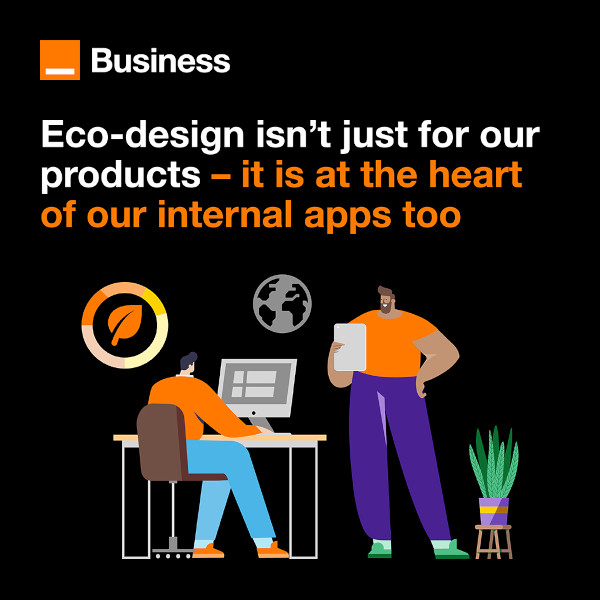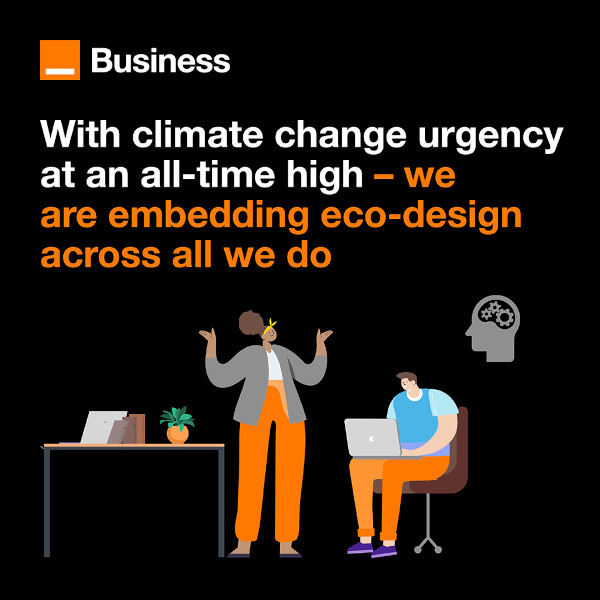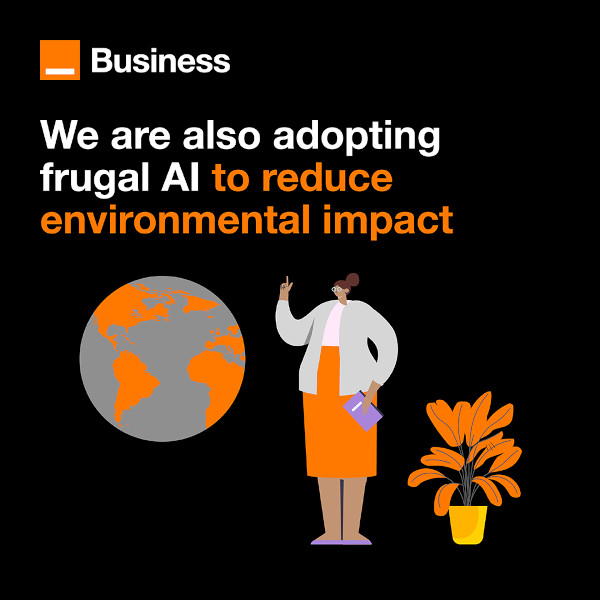Three key takeaways:
- We at Orange Business are following an eco-design approach to reduce the environmental impact of our internal applications, aligned with our goal to achieve net zero by 2040
- We follow a French-recognized framework to continuously deploy eco-design practices
- Orange Business is taking steps aiming to integrate frugal AI as part of our eco-design scope
Eco-design is a key pillar in our approach to social and environmental accountability. We have a vision to be carbon neutral by 2040. Eco-design is potentially expected to minimize energy consumption and resource usage, leading to a much smaller carbon footprint for applications and their underlying infrastructure. This broad remit applies to almost all internal applications, from HR, accounts, and marketing to customer-facing, such as ordering.

Creating eco-designed applications demands integrating sustainability principles into software development. We want our applications to consume the fewest resources and emit the least carbon emissions. We can do this partly by reducing their power consumption and optimizing code and data processing to minimize energy waste. This can be achieved using more energy-efficient code, which takes up less CPU and memory, leading to lower energy consumption. Infrastructures can be optimized to scale up without excessive energy usage.
Creating eco-friendly applications
The methodology for our eco-design initiatives is built around the Referentiel General de l’Eco-conception des Services Numeriques (RGESN), a framework developed by the French government. It provides guidelines and best practices for reducing the impact of applications, websites and digital services. This is realized by working through all aspects of a digital service, from the backend to the frontend, to the content, architecture and design.

The methodology currently provides 78 recommendations for eco-design. We are using the questionnaire part of the framework to gather information about the importance and impact of each recommendation. This information allows us to draw up an action plan, pinpoint development priorities and spot where there may be issues.
Our objective is to examine the ongoing maturity of our applications in terms of eco-design. Eco-design is not a one-time process; it is a continuous journey. As technology, applications and user behavior evolve, so must our applications minimize environmental impact.
Alongside the methodology, it is important to evangelize eco-design within the organization. Eco-design is often overlooked as performance, security and user experience are prioritized. However, it is critical to making application development more sustainable, efficient and future-proof. For example, we do this via internal communications, senior leadership and webinars.

Eco-design for AI
As an organization, we are heavily focused on AI. We aim to improve internal business processes and offer end-to-end AI solutions prioritizing ethical and responsible AI practices. Eco-design in AI systems means developing in a way that minimizes environmental impact throughout the entire lifecycle.

All AI models, especially large-scale ones, require significant computational power. Utilizing an eco-design methodology prioritizes energy-efficient algorithms, reducing overall energy consumption. We are also working on frugal AI initiatives with Orange Innovation that center on creating innovative digital ecosystems.
At the same time, we have guidelines for using AI. AI is a powerful tool that offers huge potential – but like any technology, it is important to consider where it adds the most value. As large AI models can be energy-intensive, we promote awareness around efficient and thoughtful use of AI across our teams.
Integrating environmental considerations into our design strategy
Our goal is to be a truly sustainable organization. As customers increasingly ask about the environmental impact of the portfolio we sell, we want to confidently say that sustainability is embedded in our overarching approach. This includes our product and service offerings and internal applications. We aim to ensure that a significant portion of our IT, ideally around 80%, follows eco-design principles with measurable impact.
We are reviewing emissions calculations and collaborating with the product and services teams to align our efforts to measure and reduce the carbon footprint of our IT stack. This includes collaborating with our solution and service providers, such as ServiceNow and Oracle.

Comprehensive environmental consideration
We have ambitious targets to reduce carbon CO2 emissions across all scopes by 45% by 2030 and are committed to reaching net zero by 2040. This highlights our dedication to significantly lowering our environmental footprint over the coming years. The eco-design of our internal applications contributes to reducing emissions and demonstrates to our customers our commitment to a greener future.
Discover more about Orange Business sustainability initiatives and how we are making a difference here.